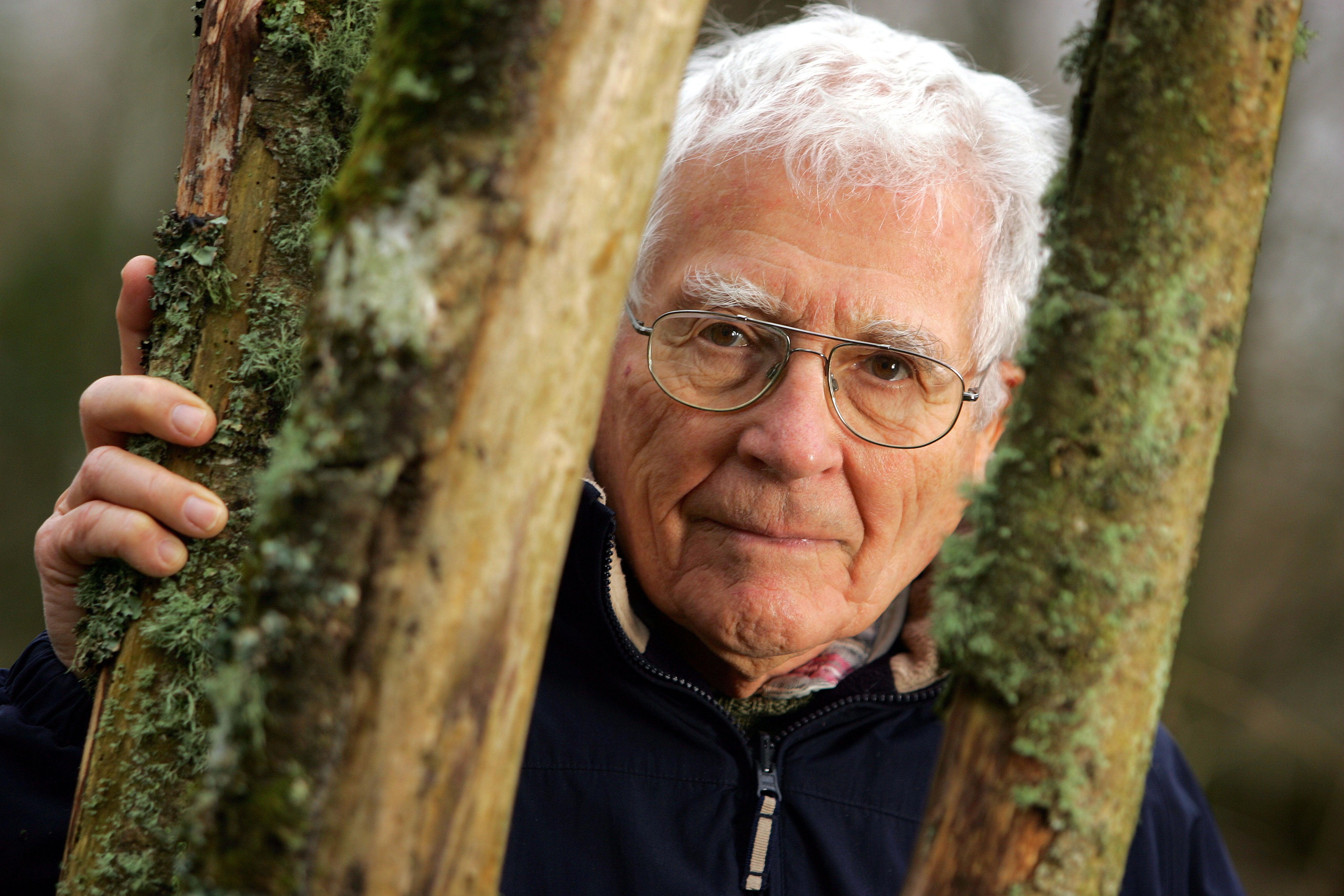Table of Contents
- The Early Years and Education of James Lovelock
- A Pioneering Mind: Contributions to Environmental Science
- Understanding the Gaia Hypothesis and Its Impact
- James Lovelocks Legacy in Modern Climate Conversations
- Recommendations for Engaging with Lovelock’s Work and Ideas
- Q&A
- To Conclude

The Early Years and Education of James Lovelock
James Lovelock was born on July 26, 1919, in Letchworth Garden City, Hertfordshire, England. Growing up in a modest household, he was the only child of a carpenter and a domestic worker. From a young age, Lovelock exhibited a natural curiosity and intelligence, often exploring the world around him with a scientific lens. This early fascination with nature and experimentation would lay the groundwork for his future contributions to science.
His formal education began at the local grammar school, where he displayed remarkable aptitude in the sciences and mathematics. The experiences of his youth were influenced by the tumultuous backdrop of World War II, which would soon alter the trajectory of his life. Lovelock attended the University College London, where he earned a degree in chemistry. This critical phase of his education provided him not only with academic knowledge but also with practical experiences that honed his analytical skills.
After completing his undergraduate studies, Lovelock’s pursuit of knowledge did not end. He enrolled in a PhD program at the University of London, focusing on medicine and the application of biochemistry. During this time, he worked with notable scientists and continued to cultivate his unique perspective on environmental science. Lovelock’s diverse education and hands-on experiences forged a strong foundation for his future as a pioneering environmental scientist, inventor, and the influential creator of the Gaia Theory.

A Pioneering Mind: Contributions to Environmental Science
James Lovelock’s innovative thinking has transformed the landscape of environmental science, introducing concepts that resonate deeply with both scientists and the public. One of his most profound contributions is the Gaia Theory, which proposes a vision of Earth as a self-regulating entity. This paradigm shift opened up new dialogues about the intricate relationships between biological systems and the physical environment, advancing our understanding of ecological balance. Lovelock’s perspective encourages us to view the planet not merely as a backdrop for human activity but as a complex, interdependent system that requires careful stewardship:
- Interconnectedness: His theory emphasizes that all life forms contribute to maintaining the conditions necessary for their survival.
- Biological Feedback Loops: Lovelock described processes where life interacts with the environment, like how plants affect atmospheric gases.
- Environmental Responsibility: By framing Earth as a living system, he sparked a greater sense of responsibility towards environmental protection.
In addition to his theoretical contributions, Lovelock pioneered various scientific instruments that revolutionized the detection of environmental pollutants. His electron capture detector was a groundbreaking invention that enabled scientists to measure trace levels of contaminants in the air, setting new standards in environmental monitoring. The efficacy of this tool in identifying harmful substances directly contributed to our understanding of the impact of human activity on ecosystems. Key innovations include:
| Innovation | Description |
|---|---|
| Electron Capture Detector | Allowed detection of pesticides and pollutants at minimal concentrations. |
| Atmospheric Monitoring Techniques | Provided new methodologies for assessing climate changes and ozone depletion. |
Beyond the scientific realm, Lovelock’s writings have motivated a global conversation concerning environmental conservation. Works such as “The Revenge of Gaia” articulate the urgent need for a transition to sustainable practices, emphasizing the precarious balance of our planet’s health. His narrative interweaves science with a passionate call to action, inspiring individuals and policymakers alike to rethink their relationship with nature. Lovelock’s visionary approach continues to influence environmental policy and public perception, reminding us that the future of our planet hinges on understanding and preserving this delicate web of life.
Understanding the Gaia Hypothesis and Its Impact
The Gaia Hypothesis, developed by James Lovelock, presents a revolutionary framework for understanding the Earth as a self-regulating system. This concept proposes that all living organisms interact with their inorganic surroundings to create a balanced environment conducive to life. By framing the Earth as a single, interconnected entity where life and the physical environment consistently influence each other, Lovelock shifted the discourse around ecological science. The implications of this perspective have far-reaching effects on environmental policy, conservation efforts, and our general approach to sustainability.
One of the most significant impacts of the Gaia Hypothesis is its influence on how we perceive climate change and environmental degradation. By highlighting the interconnectedness of the biosphere, the theory calls for a more holistic approach to environmental management. Some key points of impact include:
- Enhanced Awareness: Encouraged a broader understanding of ecological interdependencies.
- Policy Integration: Affected environmental legislation by pushing for approaches that consider the Earth as a collective system.
- Global Collaboration: Fostered international cooperation in addressing global environmental issues, emphasizing that actions in one part of the world can affect the entire planet.
The Gaia Hypothesis also ignited a deeper exploration of the intrinsic relationship between life forms and their habitats, leading to various emerging fields such as Earth System Science. This concept promotes the idea that living systems help to regulate the Earth’s climate and chemical environment, which has influenced scientific research across multiple disciplines. Researchers are increasingly examining questions such as:
| Research Area | Implications |
|---|---|
| Climate Science | Understanding feedback loops between living organisms and climate systems. |
| Ecology | Investigating the interdependence of species for ecosystem health. |
| Philosophy | Reevaluating human relationships with nature and ethics. |

James Lovelocks Legacy in Modern Climate Conversations
James Lovelock’s contributions to the realm of climate science extend far beyond his pioneering work in environmental awareness. As the creator of the Gaia theory, he posited that Earth functions as a self-regulating organism, a concept that has profoundly influenced contemporary discussions around ecology and climate change. Lovelock emphasized the interconnectedness of biological systems and the vital role humanity plays in the planet’s health. His visionary insights have prompted both scientists and the public to reconsider how we interact with our environment.
In modern climate conversations, Lovelock’s legacy is manifested through key themes that resonate across various platforms and movements. For instance, his thoughts on climate resilience underscore the necessity for communities to adapt to changing conditions instead of solely focusing on mitigation strategies. This approach has encouraged a holistic viewpoint, compelling policymakers to incorporate sustainability into economic planning. Moreover, Lovelock’s advocacy for nuclear energy as a viable solution to combat climate change recognizes the urgency of reducing carbon emissions while balancing energy needs for a growing population.
| Theme | Impact |
|---|---|
| Gaia Theory | Promotes a holistic view of Earth’s systems |
| Climate Resilience | Encourages adaptability and community planning |
| Nuclear Energy Advocacy | Highlights practical solutions for carbon reduction |
Furthermore, Lovelock’s predictions and warnings about the imminent threats of climate change have fueled discourse around urgency and action. His candid assessments of the planet’s future have sparked dialogues among researchers, activists, and the general public, prompting greater scrutiny of our ecological footprints. As more people engage with his concepts, Lovelock’s ideas continue to inspire innovative strategies in addressing climate issues, ensuring that his voice remains influential in shaping environmental discourse today.

Recommendations for Engaging with Lovelock’s Work and Ideas
To truly appreciate James Lovelock’s contributions to environmental science and philosophy, one must actively engage with his key texts and ideas. Start with his seminal work, “Gaia: A New Look at Life on Earth”, where he presents the fascinating concept of Gaia—the Earth as a self-regulating organism. Focus on how he intertwines scientific evidence with philosophical inquiry, which is essential for understanding his vision of interconnectedness in ecological systems.
Participating in discussion groups or online forums can also enhance your engagement with Lovelock’s work. These platforms allow for the exchange of interpretations and perspectives, enriching your understanding of his ideas. Explore topics such as:
- Climate Change and Its Implications: Delve into Lovelock’s predictions and theories about climate impact.
- Technological Solutions: Analyze his views on technology’s role in addressing ecological issues.
- Philosophical Underpinnings: Reflect on how his ideas challenge traditional scientific thinking.
Moreover, connecting Lovelock’s concepts to current environmental movements can provide a deeper context for their relevance today. Creating a comparative table might help highlight the contrasts and similarities between his ideas and modern ecological practices:
| Aspect | James Lovelock’s View | Modern Environmental Practices |
|---|---|---|
| Interconnectedness | Earth as a single self-regulating system | Systems thinking in sustainability |
| Human Impact | Humans as both part of and disruptors to Gaia | Focus on reducing human footprint |
| Technology’s Role | Emphasis on innovative tech solutions | Caution in tech reliance; preference for natural solutions |
Through such integrated approaches, readers can cultivate a nuanced understanding of Lovelock’s legacy and its implications for future generations. Whether through reading, discussing, or applying his theories in real-world contexts, engaging with his work invites a richer dialogue about our planet and our place within its intricate web of life.
Q&A
Q&A: Understanding the Background of James Lovelock
Q: Who is James Lovelock? A: James Lovelock is a renowned English scientist, environmentalist, and author, best known for formulating the Gaia theory. Born on July 26, 1919, he has made significant contributions to ecology, climate science, and environmental philosophy.Q: What is the Gaia theory? A: The Gaia theory proposes that Earth functions as a self-regulating system, where living organisms interact with their inorganic surroundings to maintain conditions suitable for life. This revolutionary idea suggests that the biosphere and physical components of the planet interact closely and act in ways that sustain life.
Q: What inspired Lovelock to develop the Gaia theory? A: Lovelock’s inspiration came from his early work as a scientist, particularly during the 1960s when he studied the role of microorganisms in Earth’s atmosphere. He observed how life forms could influence environmental conditions and recognized a need to understand these complex interdependencies.
Q: What is Lovelock’s educational background? A: Lovelock attended the University of Manchester, where he earned a degree in chemistry. His academic journey continued with a Ph.D. in medicine from the same institution. His diverse educational background laid a solid foundation for his future research in environmental science.
Q: How has Lovelock contributed to environmental science beyond the Gaia theory? A: Beyond the Gaia theory, Lovelock has developed innovative technologies for measuring pollution and climate change, including the Electron Capture Detector, which revolutionized the field of atmospheric chemistry. He has also engaged in extensive writing, sharing his insights through books and articles that highlight the urgency of addressing climate change.
Q: What are some of Lovelock’s notable works? A: Lovelock has authored several influential books, including “Gaia: A New Look at Life on Earth,” where he first introduced the Gaia theory, and “The Revenge of Gaia,” which addresses the impacts of climate change and human activity on the planet. Each work reflects his deep concern for the environment and advocates for sustainable living.
Q: How does Lovelock view humanity’s role in protecting the Earth? A: Lovelock believes that humanity plays a critical role in the stewardship of Earth. He argues that understanding our interconnectedness with the planet is vital for sustainable living and that proactive measures must be taken to mitigate environmental degradation and climate change.
Q: What is Lovelock’s perspective on climate change? A: Lovelock has been a vocal advocate for recognizing the severity of climate change. He emphasizes the need for immediate action to combat its effects, cautioning that failure to do so could have catastrophic consequences for both human civilization and the Earth’s ecosystems.
Q: How has Lovelock influenced contemporary environmental thought? A: Lovelock has significantly influenced how scientists and the public view the relationship between humanity and the environment. His Gaia theory has led to a paradigm shift in ecological thinking, encouraging a holistic view of Earth as a living organism that requires responsible stewardship from its inhabitants.
Q: Are Lovelock’s ideas universally accepted? A: While Lovelock’s Gaia theory has garnered considerable attention and support, it has also faced criticism. Some scientists argue that it anthropomorphizes natural processes. Nevertheless, his work has sparked vital discussions about the interconnectedness of life and the importance of environmental conservation.
Q: What is Lovelock’s legacy? A: James Lovelock’s legacy lies in his pioneering ideas that have broadened our understanding of ecological systems. His insights continue to inspire scientists, environmentalists, and policymakers, highlighting the urgent need for collaboration in addressing the environmental challenges facing our planet.



0 Comments